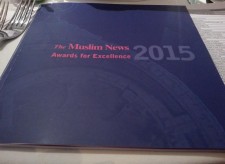ower of Firoz is attributed to Sultan Saifuddin Firuz Shah, the second Habshi ruler of Bengal. (Credit ‘Gaur: Its Ruins and Inscriptions by John Henry Ravenshaw, 1878)
M Ahmedullah
A few years ago, during a conversation, a Somali lady in East London reminded me that black history was more than just slavery. I introduced the topic of slavery as I thought I had discovered a possible link between Bengal textiles and Trans-Atlantic slavery, which she would find interesting and that it would be relevant for future Black History Month programmes. She asked whether I knew that there were once great African rulers of Bengal. My knowledge on the subject was quite limited at the time. I replied, yes, and pointed out that it was not very significant in Bengal’s history.
I recently began to wonder, how was it possible for there to be a period of African kings in Bengal without an African invasion or a sufficiently large African community in the country? This article is part of my effort to develop a better understanding of the period.
During 1487-94, the Bengal Sultanate was ruled by a series of kings of African origin. From the beginning of the Muslim rule in northern India, in addition to Turkish slaves, Ḥabshīs (Ethiopians) were imported to serve nobles, military commanders and the sultans, primarily as slave soldiers. Some of them rose through the ranks and achieved high positions, becoming commanders, senior officials, nobles, governors and even rulers. In the case of the Bengal Sultanate, several Africans became the rulers, but only for a very brief period. These rulers were most probably from complex African origins and mixes with a majority being Habshis.
Gaur, then a beautiful and large city, and the capital of the Bengal Sultanate, was described by the16th Century Italian traveller Ludovico Di Varthema as ‘the best place in the world, that is, for living in.’
A small part of that city now lies within the border of present-day Bangladesh in Rajshahi, the rest being in the Indian part of Bengal. According to East India Company officer Henry Creighton, based on his surveys, visits and drawings on the ruins of Gaur, carried out during the early years of the 19th Century — the city stretched with a ‘continued population, for nineteen miles, and a mile and a half wide.’
Most of the writings on the ‘Ḥabshī rule of Bengal’ (1487-94) are very generalized and brief. They narrate the story of how a Ḥabshī eunuch called Khawajesara, became known as Sultan Shahzeda Barbak Shah, after killing the last Ilyas Shahi ruler, Sultan Jalaluddin Fateh Shah, in 1487, and became a very short-lived sultan.
However, within a matter of a few months, he was killed by Malik Andil, the loyal Ḥabshī commander of Sultan Jalaluddin who became the new ruler in the same year and called himself Sultan Saifuddin Firuz Shah.
Most narratives state that Andil was reluctant to take over-power after he had killed Sultan Shahzada. For him, his action to depose the usurping eunuch was only to avenge the killing of his master and to restore the throne to its rightful owner, the young son of the murdered sultan. However, the wife of the murdered Sultan did not want her infant son to become the new sultan.
Instead, she requested Andil takes the position as she had promised to God that she would make whoever killed the usurper sultan the new sultan. Her position was supported by the nobles as Andil had a good reputation and also highly regarded by most at the court.
Andil became the new sultan in 1487 and called himself Sultan Saifuddin Firuz Shah. Although the nature of the nobles at court and their compositions have not been
discussed anywhere, it is highly likely that many individuals with an Abyssinian origin were an important part of the Gaur nobility of the time and enjoyed powerful positions of influence in the military, politics and society.
The rule of Sultan Saifuddin lasted for just over two years, and there exist controversies regarding how his life ended in 1490 – whether he died from natural causes or was killed by a rival. Regardless, he has been depicted mostly positively by historians as being a good and just king who brought stability to the country, although some of his contemporaries worried that he would bankrupt the treasury through his public works programme and excessive concerns for the poor.
After Sultan Saifuddin’s death, a young child named Sultan Qutubuddin Mahmud Shah was enthroned. This new sultan was killed within a year of his enthronement by another Ḥabshī named Sidi Badr Diwana, who established himself on the throne as Sultan Shamsuddin Muzaffar Shah in 1490. Diwana first murdered Habash Khan, the prime minister and the regent protector of Sultan Qutubuddin Mahmud Shah, before swiftly killing the young sultan.
In contrast to the rule of Sultan Saifuddin, who was considered wise and benevolent, Sultan Shamsuddin has been depicted oppositely. He was said to have been unwise, cruel, who eliminated potential rivals, increased taxation and foolishly reduced the pay of the army. These actions led to his Prime Minister, Hussain Sharif, to switch side and work with dissatisfied nobles and rivals at the court and outside to organise a rebellion. The rebels successfully killed Sultan Shamsuddin in 1494, which ended the brief ‘ Ḥabshī rule of Bengal.’ After that, the Hussain Shahi dynasty was established by Hussain Sharif,that lasted until 1538.
Were the Ḥabshī rulers slaves?
According to Tarikh-i Firishta by Muhammad Qasim Hindu Shah (Ferishta), written more than 100 years after the Ḥabshī rule had ended, 8,000 Habshis were brought to Bengal by Sultan Rukunuddin Barbak Shah (1459-74). Presumably, all the Ḥabshī rulers were free men and achieved their freedom through any of the possible paths of manumission. There is also a possibility that some of them were not slaves that directly originated from Abyssinia but could have been born in India from Indian mothers and freed Abyssinian slaves. There is no credible historical source to clarify this.
Sultan Shahzada Barbak Shah, the first Abyssinian ruler of Bengal, who ruled for about six months, must have had some powerful supporters in the Sultanate, at least at the beginning. Otherwise, he would not have lasted the length of time that he did. He was described as a eunuch, but his slave status was not discussed in any of the main sources. As he seems to have been accepted as a legally legitimate sultan for a while and the fact that no objections linked him to a possible slave status has been documented in historical records, meaning he was most likely a freeman.
Sources describe Malik Andil, who became Sultan Saifuddin Firuz Shah, as a ‘premier-nobleman’. There is no discussion about his slave status. Sultan Qutubuddin Mahmud Shah was either the son of Sultan Jalaluddin Fateh Shah or Sultan Saifuddin– his slave status is not discussed in any of the historical documents. However, Habash Khan, who was entrusted to look after the child sultan, who became the administrative-general of financial and administrative affairs, was described as a slave. Sidi Badr Diwana, who became Sultan Muzaffar Shah after murdering Sultan Qutubuddin Mahmud Shah, has been described as a slave.
As these four individuals were all sultans for various lengths of time with support from certain sections of society, rather than only from Abyssinians, they were all likely to have been free men when they assumed power. As without manumission, it would not have been possible for any of them to become legally legitimate sultans.
To conclude, there was no Ḥabshī, Ethiopian or Abyssinian dynasty of Bengal – as no dynasty was established.
M Ahmedullah
For more historial writing on Bengal please visit: www.imbuenomad.com

















